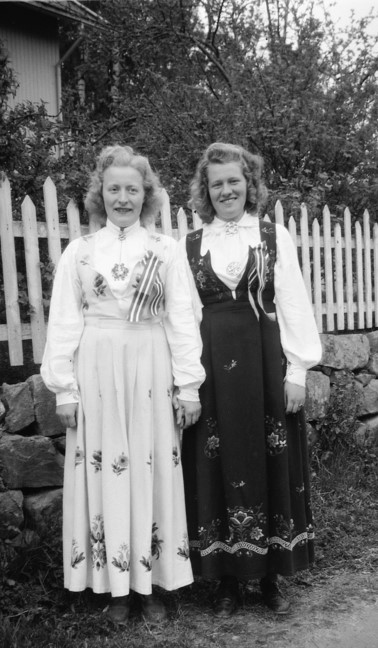Folk costumes in the Nordics today
The use of folk costumes is widespread in, for example, Åland, the Faroe Islands, Greenland and Sami areas and their social importance varies, although is particularly significant in Norway.

Although folk costumes exist in all Nordic countries, their social importance is negligible in Denmark and Finland, moderate in Sweden (where roughly 8% of the women own a folk costume) and very significant in Norway. In that country, well over half of the female population owns a bunad, as folk costumes authorised by the national Bunad and Folk Costume Council (Bunads- og folkedraktsrådet) are called. In Åland, the Faroe Islands and Greenland, traditional forms of dress are also widespread, and in the Sami areas, traditional dress is used by both genders at most formal occasions. This article mainly focuses on the situation in Norway.
A great number of folk costumes exist in Norway, all of them associated with a locality or region. However, few are very ancient; the vast majority have been created or at least reconstructed since the late 19th century, as a part of the national romantic movement which flourished around independence in 1905. Although anyone can in principle wear the bunad she (or he – male versions exist) likes, there are moral sanctions against wearing a costume from an area one is not connected to through residence or ancestry. The bunad, thus, is more than a garment: it is a marker of national and local identity. Recently, immigrants have been encouraged to wear folk costumes from their home countries at formal occasions. An expensive kind of dress, bunads are worn at occasions such as weddings, on Constitution Day (17 May) and at formal parties. During the 1990s, the number of bunads grew markedly, possibly because large numbers of newly oil-rich Norwegians could now afford them or because the successful anti-EU campaign of 1994 and the Winter Olympics organised in the same year had led to a heightening of national awareness.
The use of bunads is circumscribed by a strict morality. In the early 2000s, Queen Sonja was reprimanded by the press for wearing hers with sunglasses, and Crown Princess Mette-Marit was chided for wearing a “fantasy costume” (a newly designed, bogus traditional dress) rather than a proper bunad from her home region. In sum, folk costumes signify a strand of Norwegian nationalism which attaches it to the peasant past.
Further reading:
- Olav Aagedal, The use of national symbols in an age of internationalisation (Oslo: Diakonhjemmets Høgskolesenter, 2001).
- Thomas Hylland Eriksen, 'Keeping the recipe: Norwegian folk costumes and cultural capital', Focaal 44 (2004), pp. 20–34.